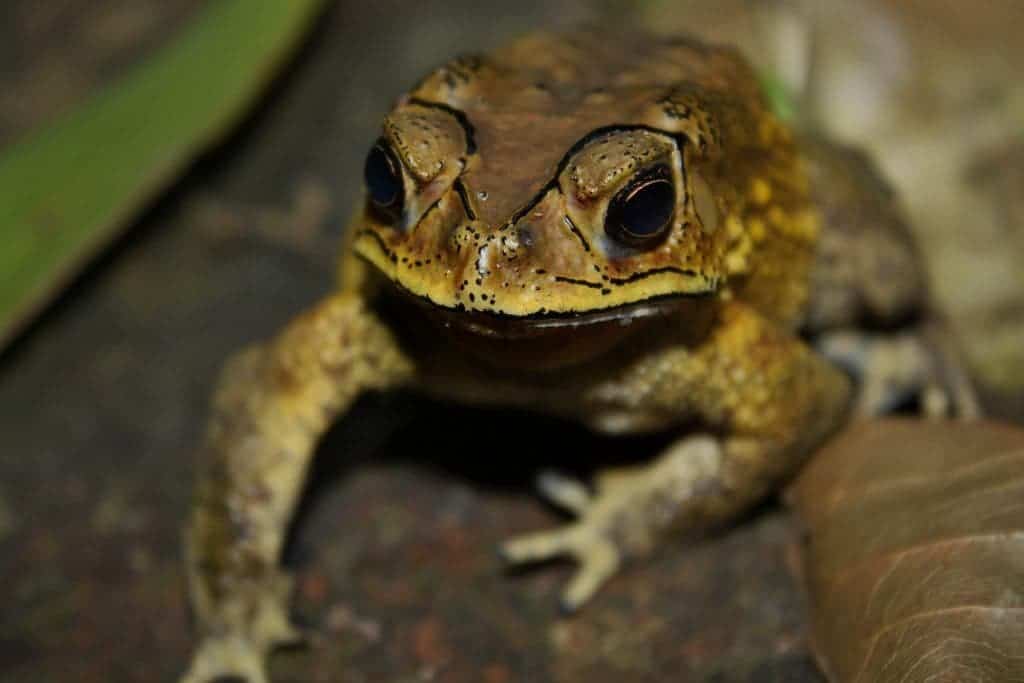Before humans arrived on the island, Madagascar had been largely isolated for up to 90 million years. It never had toads, for instance, not until humans brought them along with their ships. One species of toad, the Asian common toad, was first spotted in 2014 along the island’s largest seaport and left scientists worried. The toad secrets a slime that is highly toxic, and considering its harmless appearance, many native species might mistake it for easy prey and die a horrible death. Now, a new study confirmed these fears — the toad’s poison is toxic enough to kill the vast majority of Madagascar’s unique biodiversity, including the iconic lemurs along with hundreds of other species found nowhere else in the world.
An ecological time bomb
The problem with introducing a foreign species is that there is always the risk of spreading a new disease, predation or new competition for resources. For instance, the Burmese Python hitched a ride to Florida and made a habit of feasting on a variety of endangered birds and even alligators. In Australia, European rabbits bred like crazy, earning them the distinction of becoming the most significant known factor for species loss in the continent. In Madagascar, the numerous waterways, drainage systems, and rice paddies offer the perfect breeding grounds for Asian common toads (Duttaphrynus melanostictus). Just one female can produce thousands of eggs.
“In Australia, the introduction of cane toads has caused profound perturbation to many ecosystems by removing key predators from local food webs with their toxins,” says Wolfgang Wüster of Bangor University, United Kingdom. “Similar effects are likely to occur in Madagascar, where toads were never present before, as well; predators that frequently feed on toads and do not rapidly learn or evolve to avoid them are likely to become much rarer or possibly extinct.”
The African island’s native islands are not accustomed at all to toads of any kind, and will likely see them as easy picking. Little do they know that the toads secrete a toxic which triggers cardiac arrest. The toad’s natural predators, such as some snakes and rodents living in South and Southeast Asia, have developed mutations that allow them to be immune to the toxins. However, the island’s predators have not had time to adapt.
Researchers at Bangor University in the United Kingdom sequenced the DNA of various native species to the islands, including snakes, lizards, frogs, birds, and mammals. Only one species, a rodent called the white-tailed antsangy, has the protective mutations allowing it to consume the toxic toad. Absent these mutations, most of Madagascar’s wildlife is vulnerable.
“Our findings confirm that the invasive toads are likely to have a significant impact on many Malagasy endemic species, adding to the country’s existing conservation problems and potentially endangering many of Madagascar’s most iconic endemic species, such as tenrecs and the enigmatic fossa, as well as a plethora of other species,” says co-author Nicholas Casewell of the Liverpool School of Tropical Medicine.
The good news is that the toads have only been spotted along a 350-km strip on the island’s northeastern coast. But range will surely expand soon given the ripe breeding conditions. There might be something we can do, but the authors of the new study haven’t offered any clear-cut solution to this ecological time bomb waiting to happen. A cleansing effort might require many millions of dollars, funding which is difficult to access and might not even work. It’s enough for a handful of individuals to survive somewhere in some isolated pockets in order to restart a huge population.
So, it seems like the situation is looking pretty dire for Madagascar’s biodiversity, which was already in a difficult spot as it were, with many species threatened by loss of habitat at the hand of deforestation.
“This is another example of how species introduced from one part of the world to another can disrupt natural ecosystems,” says Ben Marshall, a master’s student at Bangor University and first author of the new study. “Preventing the introduction of alien invasive species must be a top priority for biodiversity conservation.”
Scientific reference: Benjamin Michael Marshall, Nicholas R. Casewell, Miguel Vences, Frank Glaw, Franco Andreone, Andolalao Rakotoarison, Giulia Zancolli, Friederike Woog, Wolfgang Wüster. Widespread vulnerability of Malagasy predators to the toxins of an introduced toad. Current Biology, 2018; 28 (11): R654 DOI: 10.1016/j.cub.2018.04.024










